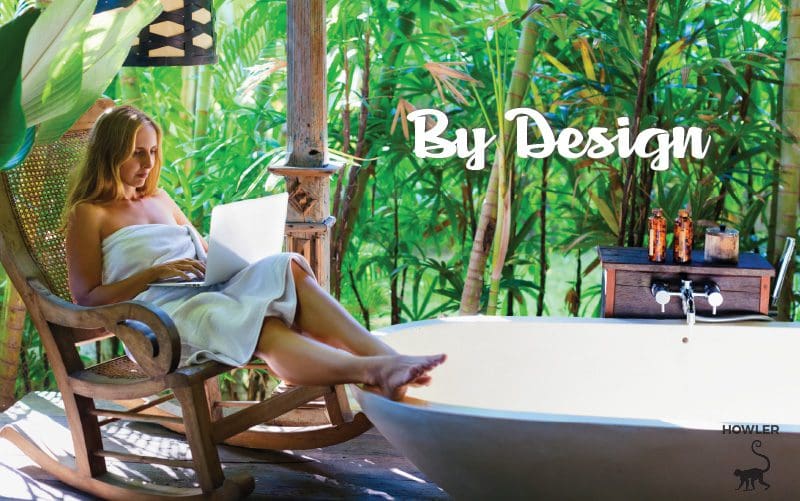
Building in Costa Rica: Sustainable, Attainable and Affordable
Building in Costa Rica: Sustainable, Attainable and Affordable. Costa Rica inspires many vacationing visitors to reflect on sustainable living ideas they can take home with them. Seeing pristine human landscapes in this country alongside magnificent forests — so vulnerable, yet well protected — makes them ponder what anyone can do, anywhere in the world, to enjoy a better quality of life without hurting the environment. They wonder, how can I do more? Is sustainability attainable no matter where I live … and is it affordable?
The answer is probably “yes,” and the possibilities more widely conceivable than most realize. Sustainable living is largely a matter of proper design. One of the most common misperceptions is that it’s not only too difficult but too expensive for most home building or home renovation budgets. This does not have to be the case when we look at the essence of sustainable living by design from these perspectives of efficiency.
Create your own low-cost,
slow drip irrigation system
from repurposed beverage bottles.
Energy
Reducing energy consumption wherever and however possible is the goal. There are more options than ever for installing photovoltaic solar energy panels or creating eolic (wind) energy on the roof of your new or existing home. But if that’s not feasible, never overlook the relatively basic considerations for saving energy, at little or no additional cost.
When designing and building in Costa Rica, what is the most favorable positioning on the property to promote sun for heating and natural breezes for cooling? The same applies to strategically creating shade where desired, both to optimize and filter sun exposure. Decisions about the placement of shade trees around your property and built-in structural features on your home’s most sun-exposed facades can make a significant difference.
Another simple solution is to paint your roof white to maximize reflectivity of the sun’s rays and thereby lower the interior temperature of your home. Painting the exterior walls a lighter color can enhance the impact on interior temperature, as well as incorporating energy-efficient insulation in the roof and exterior walls.
Inside your home, help expedite the eco-responsible lighting trend by using only CFL or LED bulbs. Besides making careful choices of new appliance purchases — ideally bearing “energy star” labels — be mindful of checking energy consumption charts. It can be that simple to save on your energy bill.

Water
Water efficiency, both inside and outside your home is imperative. That means reducing as much as possible your consumption of potable water for tasks that do not require it.
Water-efficient plumbing fixtures in today’s consumer market generally require a lot less water than older models to function properly. Faucets, shower valves and toilets are readily available and do not necessarily cost much more than the traditional fixtures. Just beware in asking for basic water-efficient models. There is a tendency for retailers to promote more sophisticated higher-end models that perform the same as basic energy-saving fixtures but cost a lot more.
Even in the absence of a septic system for the treatment and recycling of household wastewater, rainwater harvesting can be a viable solution for substituting “gray water” when potable water isn’t required. Rudimentary, reasonably priced systems have become more widely available for collecting, storing and redistributing rainwater on your property.
Other water conservation measures can be as simple as planting native species of flora that grow well in dry conditions. Or create your own low-cost, slow drip irrigation system from repurposed beverage bottles. Fill with water and puncture tiny holes in the caps before placing upside down in the soil around plant roots and tree trunks.
Building materials
This aspect of home design has become the most important application of the sustainable philosophy. It means being informed and conscientious in selecting construction materials that are sourced as close to home and with as little environmental impact as possible. Factor in the logistics of location for production, processing and transportation, as well as the life cycle, energy consumption and overall carbon footprint. The questions to ask when choosing materials are: how, when and where? If they are locally harvested and created with care, so much the better as an asset for your home. If on the other hand, you are fixated on a material sourced from India, for example, evaluate the carbon footprint on land and on sea as a motive for seeking a local and equally beautiful alternative.
In essence, sustainable living goals can be attainable in more ways than you might have thought possible, and perhaps with a lower price tag too. It’s all about making choices when building in Costa Rica and in designing your new home or modifying your existing space. These decisions don’t have to be complicated or expensive. With the cost savings and resource conservation benefits come enhanced quality of life and peace of mind.
As always, you are well advised to consult with knowledgeable professionals who will help implement your vision.

